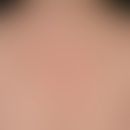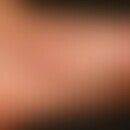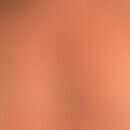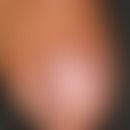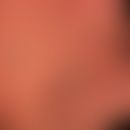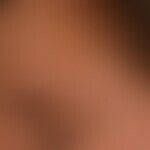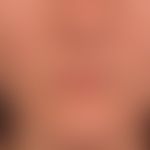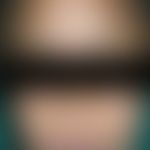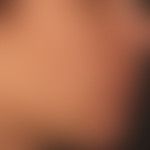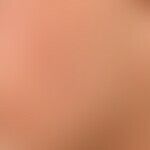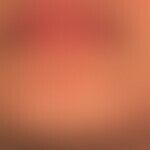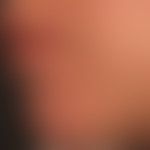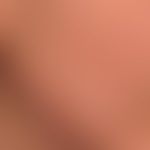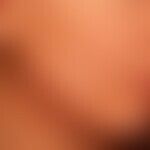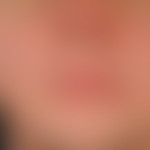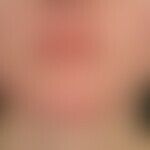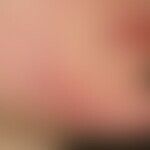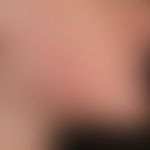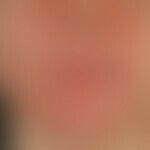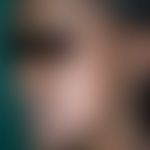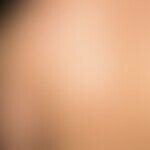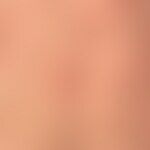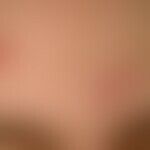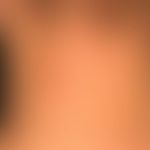Synonym(s)
DefinitionThis section has been translated automatically.
The most common form of acne vulgaris, which is characterized by comedones and predominantly by inflammatory papules and pustules.
ClassificationThis section has been translated automatically.
Depending on the number of papules and pustules, a distinction is made between grades I-IV:
- Grade I: < 10 papules and pustules/face half
- Grade II: 10-20 papules and pustules/face half
- Grade III: 20-30 papules and pustules/face half
- Grade IV: > 30 papules and pustules/face half.
You might also be interested in
Occurrence/EpidemiologyThis section has been translated automatically.
In the USA, 40-50 million people are affected annually. Most affected are male, less frequently female adolescents and young adults aged 12-24 years.
In 12% of women and about 3% of men acne persists into the 5th decade of life (acne tarda).
EtiopathogenesisThis section has been translated automatically.
S. and Acne vulgaris (overview)
ManifestationThis section has been translated automatically.
Especially among adolescents and young adults; more pronounced among boys or men. With acne tarda courses up to the 4th decade of life and beyond.
Clinical featuresThis section has been translated automatically.
In the area of the seborrhoeic zones, especially on the face, shoulders and back, in the upper sternal region, disseminated follicular comedones, inflammatory red papules and papulo-pustules as well as larger nodules are found, which become denser towards the body axis (centrofacial, middle of the back). If the inflammation is extensive, ruptures of the nodules, painful, deep abscesses, cyst and fistula formation, and deep scarring when healed may occur.
General therapyThis section has been translated automatically.
External therapyThis section has been translated automatically.
- See below Acne vulgaris. Depending on the extent of the seborrhoea and the skin sensitivity, benzoyl peroxide 2.5-10% in a gel base (e.g. Akneroxid Gel, Aknefug oxid, Benzaknen, Cordes BPO, PanOxyl) or in a cream base (e.g. Klinoxid, PanOxyl) or suspension as minute therapy (e.g. Akneroxid-L, PanOxyl W).e.g. Akneroxid-L, PanOxyl W), initially 1 time/day, after habituation 2 times/day or azelaic acid 20% (Skinoren), initially 1 time/day, later 2 times/day or 0.05% isotretinoin (e.g. Isotrex cream/gel) 1 time in the evening or adapalene 0.1% (Differin gel/cream) 1 time in the evening. New topical retinoid since 2020: Trifarotene (Selgamis, Aklief) 1 time in the evening.
- If treatment is not successful enough, this basic therapy can then be supplemented by the morning application of a topical antibiotic. Established are clindamycin (Basocin) and erythromycin in alcohol, gel or ointment base (e.g. Aknemycin/Stiemycine Lsg., Aknemycin Ointment, Acne Cordes/Clinofug 2/4% Gel). Alternatively, tetracycline in ointment base (e.g., Imex Ointment). Alternatively nadifloxacin (Nadixa cream). Application in each case 2 times/day.
Internal therapyThis section has been translated automatically.
- S.u. Acne vulgaris. If there is no visible treatment success after 4-6 weeks of extended external therapy, internal antibiotics can be given additionally. Minocycline (Aknosan, Klinomycin) initial 2 times/day 50 mg p.o. Alternatively: Doxycycline (Supracycline) initial 2 times/day 100 mg p.o., later 1 time/day 100 mg p.o. Alternatively: Tetracycline (e.g. Tefilin, Tetracycline-Wolff) initial 1 g/day p.o., later 500-750 mg/day p.o.
- In women with severe seborrhoea and/or androgenisation also administration of antiandrogenic contraceptives (e.g. Clevia, Esticia, Diane 35, Neo-Eunomine).
Notice! Possible reduction of the anticonceptive effect with simultaneous administration of antibiotics!
Phytotherapy externalThis section has been translated automatically.
for mild acne pustulosa: Echinacea purpureae radix
LiteratureThis section has been translated automatically.
- Fluhr JW et al (1999) In Vitro activity of 6 antimicrobials against propionibacteria isolates from untreated acne papulopustulosa. Central blood bacteriol 289: 53-61
- Gollnick H, Schramm M (1998) Topical drug treatment in acne. Dermatology 196: 119-125
- Gollnick H (2002) Acne and its subtypes. dermatologist 53: 322-327
- Skidmore R et al (2003) Effects of subantimicrobial doxycycline in the treatment of moderate acne. Arch Dermatol 139: 459-464
- Thiboutot D et al (1999) Androgen metabolism in sebaceous glands from subjects with and without acne. Arch Dermatol 135: 1041-1045
Incoming links (13)
Acne comedonica; Acne conglobata; Adapalen; Antiandrogen-oestrogen combinations; Azelaic acid; Benzoyl peroxide; Candida folliculitis; Doping acne; Erythromycin; Isotretinoin; ... Show allOutgoing links (17)
Acne (overview); Antibiotics; Antiseptic; Azelaic acid; Benzoyl peroxide; Clindamycin; Contraceptives, hormonal; Doxycycline; Echinacea purpurea radix; Erythromycin; ... Show allDisclaimer
Please ask your physician for a reliable diagnosis. This website is only meant as a reference.
